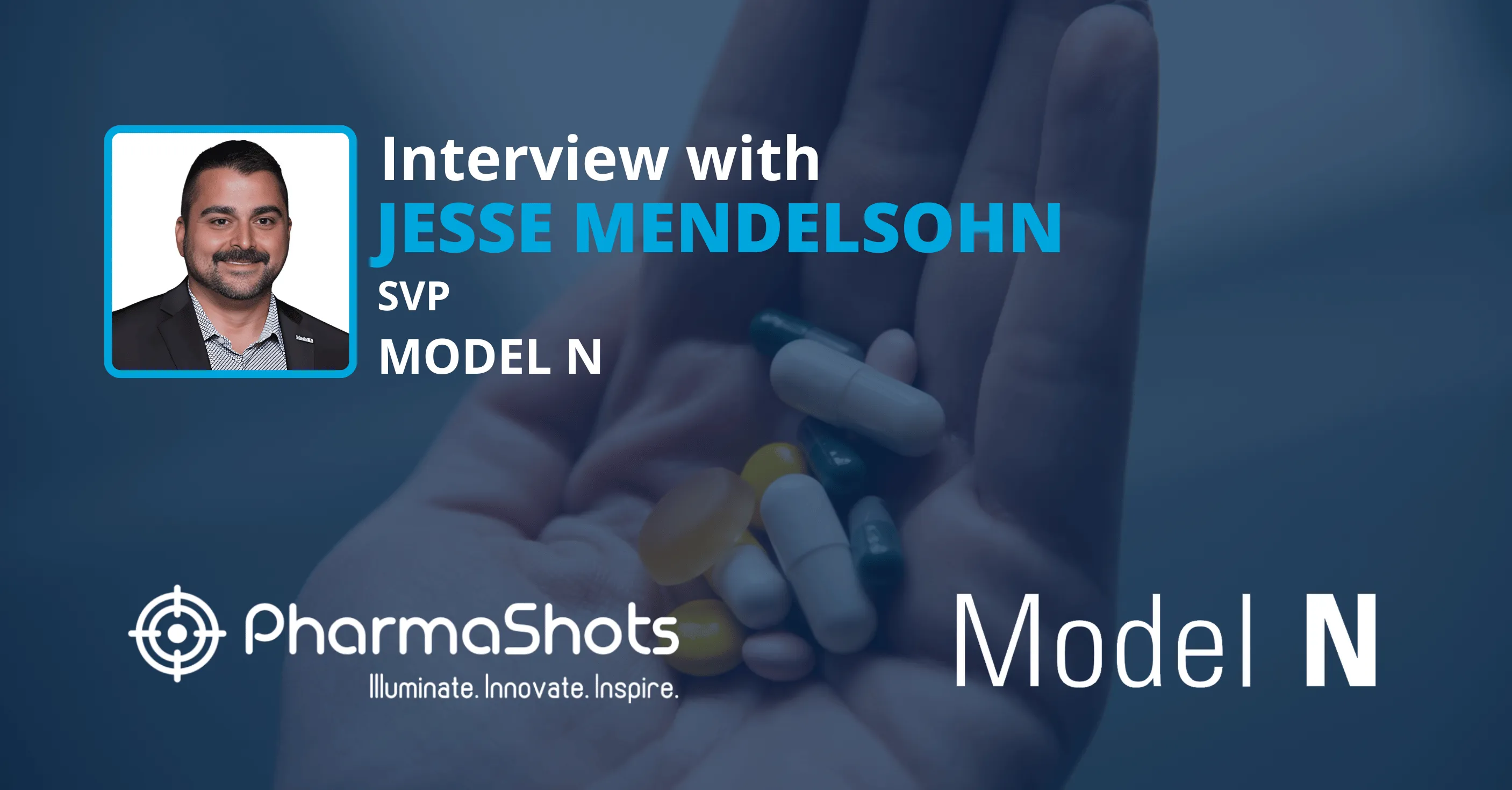
PharmaShots Interview: Entrada's Dipal Doshi Shares Insights on the Series B Funding Utilize to Advance DMD Program into the Clinic
In an interview with PharmaShots, Dipal Doshi, President and Chief Executive Officer of Entrada Therapeutics share his views on $116M Series B financing and what does this milestone means for the company's pipeline.
Shots:
- The Series B financing was led by Wellington Management Company, who was joined by Redmile Group, TCG Crossover, Greenspring Associates, Point72, Qatar Investment Authority, Moore Strategic Ventures, Goldman Sachs, CureDuchenne Ventures and one undisclosed global investment firm
- The funding will be used to advance the research, expansion, and clinical progress of Entrada's diverse pipeline, which currently includes several oligonucleotide programs in the neuromuscular space
- Entrada's latest raise will also go towards exploring oligonucleotide opportunities beyond muscle, and intracellular protein degradation leads in oncology and beyond
Tuba: Discuss the Series B funding. What does it mean to the company?
Dipal: This financing provides Entrada the capital needed to achieve several value-creating milestones, and this includes bringing our growing pipeline into clinical development.
Tuba: What are the various investors involved in the funding?
Dipal: The Series B financing was led by Wellington Management Company, who was joined by Redmile Group, TCG Crossover, Greenspring Associates, Point72, Qatar Investment Authority (QIA), Moore Strategic Ventures, Goldman Sachs, CureDuchenne Ventures and one undisclosed global investment firm.
Existing investors 5AM Ventures, MPM Capital, Roche Venture Fund, MRL Ventures Fund and Agent Capital also participated in the financing.
To date, we have raised ~ $200M ($84M in Series A and $116M in Series B)
Tuba: What is Entrada's plan to utilize the funding?
Dipal: Entrada plans to use the investment proceeds to advance our diverse pipeline towards the clinic. Included in this pipeline are several of Entrada's oligonucleotide programs for the treatment of multiple neuromuscular diseases, led by Duchenne muscular dystrophy (DMD). In addition, the funds will allow us to expand beyond neuromuscular diseases into additional therapeutic areas and advance a growing pipeline of intracellular antibody and enzyme-based therapeutics.
Tuba: Can we have a glance at your pipeline of oligonucleotide therapies to treat neuromuscular diseases?
Dipal: As noted, our oligonucleotide programs are led by DMD ~40% of patients with DMD have mutations amenable to exon skipping of exons 44, 45, 51, and 53. The Muscular Dystrophy Association cites a prevalence rate of 6 per 100,000 in the U.S. and Europe, although a recent meta-analysis published in 2020 updated that number to 7.1 per 100,000. That said most estimates of DMD are 10,000 to 15,000 in the US with a similar number in Europe. As such the 4 exons would account for 8,000 - 12,000 patients across the two regions. We are projecting a first in-human trial in 2022 for our lead program, with additional candidates following close behind. We believe the outcome in one DMD exon skipping program will be predictive of the outcomes for patients with other exon-skipping amenable mutations.
Tuba: When can we expect the first molecule to enter clinical studies?
Dipal: This year we are focusing on selecting a candidate and generating data which will ultimately lay the foundation for our IND filing, with a goal of initiating our first in human trials in 2022. Assuming everything goes as planned, we should have human data in 2023.
Tuba: What are the company's different platforms? Can you briefly explain each of them?

Source: Entrada
Dipal: Using our proprietary Endosomal Escape Vehicle (EEV') platform (demonstrated above), we are developing intracellular biologics with the potential to fundamentally improve the standard of care across a wide range of diseases.
The EEVs themselves are cyclic peptides very small rings of amino acids (the building blocks of protein) designed to ensure that they stay stable in the bloodstream. The EEVs:
- bind to the surface of any cell;
- are taken up by the cells through a process call endocytosis (where the EEV and conjugate
- are engulfed by the cell) and;
- induce the resulting endosome (a naturally occurring lipid package ferrying the EEV-conjugate into the cell) to release the contents inside the cell
The EEVs are chemically linked to any biological of our choosing. For instance, in the case of our neuromuscular programs, we chemically link them to small strands of nucleic acids called oligonucleotides. Nucleic acids are the 'letters' which in certain sequences provide the coding instructions of life. In this case, we target RNA, the code of which is read by intracellular structures which then produce proteins. In our lead programs, patients have mutations that prevent the translation of RNA into proteins. By forcing the cell to 'skip' these mutant segments of code, the cell is able to continue the process of protein generation.
On the other hand, in the case of our enzyme/protein related programs, the EEV is linked to an enzyme (which is a protein that interacts with another protein in the cell, the product of which then goes on to generate yet another step in the chain... like a circle of cascading dominos that constantly resets) critical to maintaining a specific step in a cell's metabolic processes. Patients lacking an enzyme will fail to produce needed products to maintain the viability of the cell (or other cells in the body) and may also see the buildup of toxic byproducts. Either of which can result in the symptoms of disease and sometimes death.
Finally, in the case of our EEV-linked antibody and peptide programs, the antibody or peptide is designed to capture both a mutant protein within the cell that causes disease (such as the uncontrolled replication associated with cancer) and also a protein within the cell that marks the resulting complex of EEV-antibody-mutant protein for destruction.
Tuba: What is Entrada's strategy to deal with devastating diseases?
Dipal: We define devastating disease as any condition where there are no adequate treatments. As such, we do not intend to limit our portfolio only to rare diseases. In addition, to DMD, we are exploring oligonucleotide opportunities beyond muscle, intracellular protein degradation leads in oncology and beyond, and believe that our antibody and peptide programs can address the need in a wide range of areas.
Tuba: Are you looking for investment to advance your preclinical programs into clinical? If yes, how can one contact you?
Dipal: The company is well position to achieve our strategic goals in the near future.
Tuba: Are you planning to do collaborations this year or in the coming years?
Dipal: Our end goal is always to do what's best for the patient. To most efficiently advance programs to patients, this could mean partnerships or collaborations with other industry or academic leaders. Should we decide to leverage external collaborators, we would do so in a way that preserves flexibility around our business model and future decision-making.
Tuba: Why do you think intracellular biologics have the potential to target distressing diseases?
Dipal: First, it's important to understand the potential of intracellular biologics, which when designed and delivered efficiently, target and engage the underlying drivers of disease. It's estimated that 75-80% of disease targets are inside the cell and therefore difficult to the drug, or otherwise considered undruggable. Many proteins, peptides, and oligonucleotides have highly potent and specific biological activities but are unable to penetrate the cell membrane efficiently, leading to only a small portion of the intended drug reaching the intracellular targets.
We believe our EEVs are the ideal backbone for developing biologics in a wide range of extra-hepatic focused diseases. Entrada has demonstrated intracellular uptake of unique biologics ranging from oligonucleotides to antibodies, to larger multimeric proteins. The versatility of our EEV platform offers broad therapeutic potential as we can enable the development of intracellular biologics to inhibit, degrade, edit or replace an intracellular target whichever is best suited to correct the underlying disease pathology.
About Dipal Doshi:

Dipal Doshi is the President and Chief Executive Officer of Entrada Therapeutics. He also serves on Entrada's Board of Directors.
Related Post: ViewPoints Interview: GCCA's Andrew Spiegel Share Insights on the Clear Your View Campaign

This content piece was prepared by our former Senior Editor. She had expertise in life science research and was an avid reader. For any query reach out to us at connect@pharmashots.com














